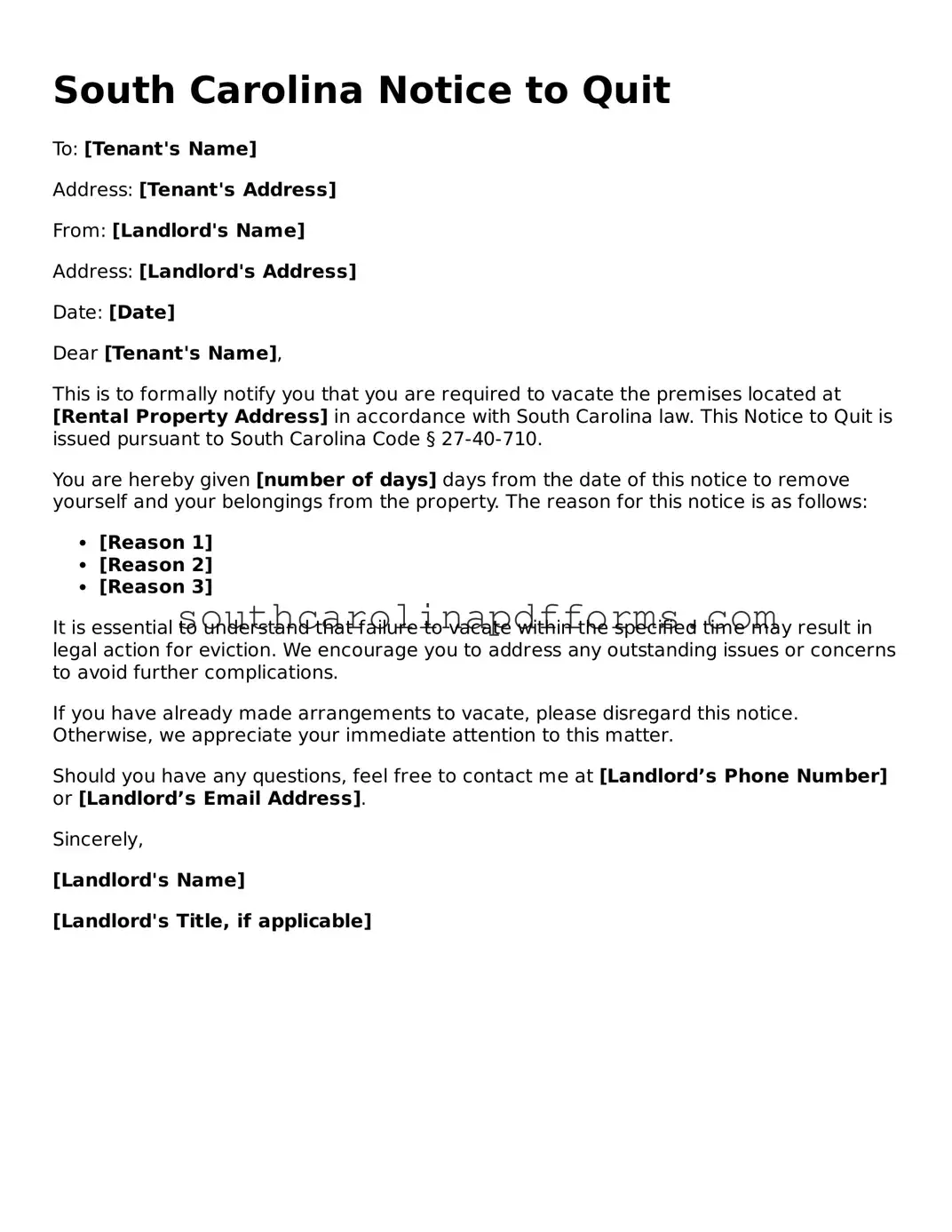The South Carolina Notice to Quit form serves as a crucial document in the landlord-tenant relationship, particularly in situations where a landlord seeks to terminate a rental agreement due to lease violations or non-payment of rent. This form outlines the specific reasons for the eviction and informs the tenant of their obligation to vacate the premises within a designated timeframe. It is essential for landlords to complete the form accurately, including details such as the tenant's name, the address of the rental property, and the date by which the tenant must leave. The Notice to Quit also provides tenants with important information regarding their rights and the potential consequences of failing to comply. Understanding this form is vital for both landlords and tenants, as it sets the stage for further legal proceedings if necessary. By adhering to the proper procedures outlined in the Notice to Quit, landlords can ensure that they are acting within the bounds of South Carolina law while protecting their property interests.
